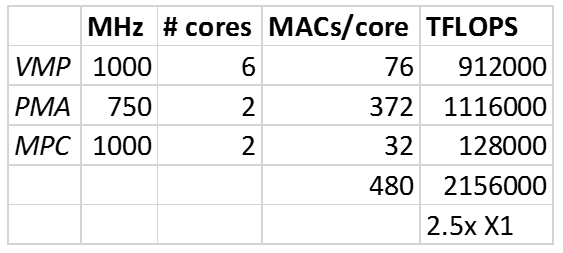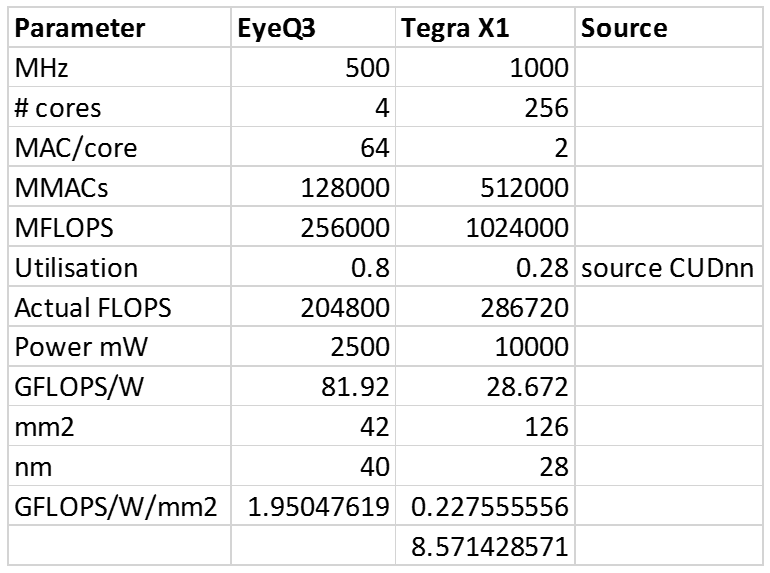https://www.youtube.com/watch?v=kp3ik5f3-2c
At 20:00 Dr Shasua talks about Mobileye experiences with CNNs
Refers to AlexNETs requirement for 60M parameters and 832M MAC operations
Mobileye have developed an architecture to support deep CNNs in software together with additional components like spatial coupling through graphical models
On IQ3 Mobileye’s 3rd gen chip this accounts for only 5% of the chip area while running at 36fps and on IQ4 this will be reduced to 0.3%
This functionality is responsible for pixel-labeling, path-planning, general objects and up to 1000 types of traffic sign etc.
29:00 EyeQ3 SoC has 4 CPUs and 4 vector accelerators dedicated to CV tasks with mass-production using IQ3 from Q1 2015
29:30 makes comparison with Nvidia X1 which was revealed at CES 2015 – to be launched in Audi cars in 2016-17
Interestingly the Tegra Z-card included not only two X1s but also a Mobileye IQ3! 30:00
All of Nvidia’s demos were using the IQ3, not the X1!
The X1 does video playback, encoding/decoding and running Android etc.
Potentially in the future the X1 will run yet-to-be-determined parking assist functionalities!
Shashua then compares the X1 to the IQ3 as a supercomputer in the context of deep networks and tears the Nvidia offering apart
Obviously Mobileye were not happy with Nvidia’s CES talk …
The stark difference here is partly down to Mobileye being economical with the truth in that their 64 MACS are obviously not 32 or even 16 bit but more likely 8-bit fixed point but no doubt Nvidia will be stung by this one!
The other thing that is very notable is that CNNs obviously benefit heavily from SIMD parallelisation and as a result have 3x the utilisation of a GPU!
BTW Myriad2 is very similar to Mobileye in terms of design philosophy
He estimates EyeQ3 would occupy 20mm2 in 28nm vs the 126 occupied by the X1
34:00 EyeQ4 engineering samples are coming out in Q4 2015; it has 4 CPUs and 3 types of Vector Accelerator VMP (backwards compatible), PMA and MPC
The new accelerators have been introduce to better cover the landscape in terms of flexibility vs performance

As you can see from the table above Mobileye have gone for even wider SIMD and some level of specialisation probably driven by CNNs (PMA and VMP) with more coarse grained SIMD being done on the MPC
Also they are handling up to 3 cameras to handle wide field of view and depth of field in what they call a trifocal arrangement

